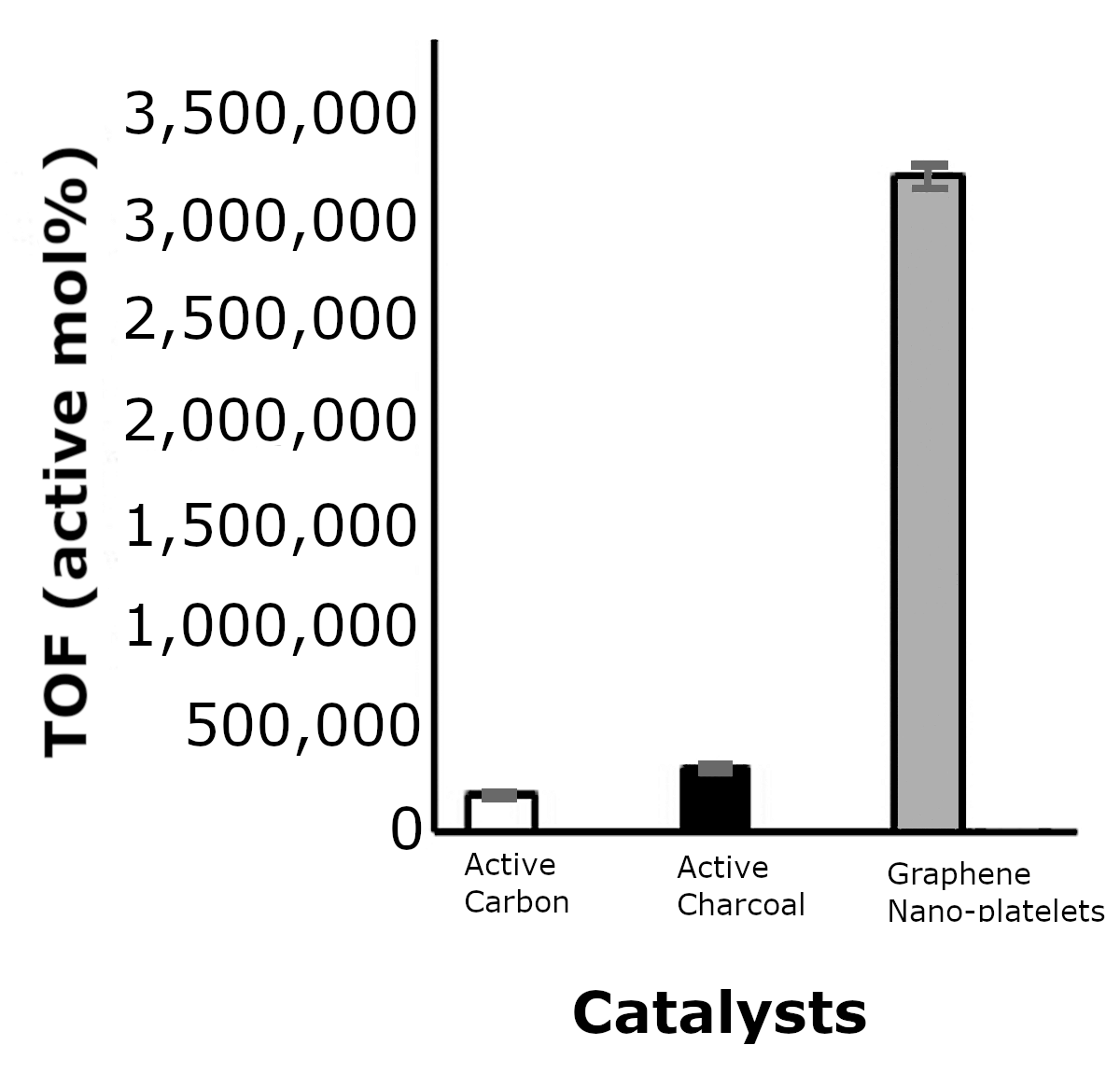Material
Coupling Catalyst
Highly active graphene based palladium catalysts
Palladium (Pd) catalysts are highly sought after for the production of various materials in the pharmaceutical and organic chemistry industries. Catalyst support on graphene materials have shown tremendous promise for improving catalytic activity. Pd nanoparticles supported by graphene defects have been shown to improve catalytic activity in many hydrocarbon coupling reactions such as Suzuki and Heck reactions and hydrogenation.
The technology
A new palladium catalyst manufacturing method was developed combining strong electrostatic adsorption for directed ionic Pd precursor uptake with a new solventless microwave irradiation method to simultaneously form Pd nanoparticles and graphene defect sites. With this method Pd nano particles are secured within holes in graphene sheets which significantly improves catalytic activity, prevents leaching, allows for easy recovery/recycling, and ensures stability in ambient conditions. Testing showed that this manufacturing method results in 10 times greater catalytic activity compared to common substrates. Unlike traditional Palladium catalyst manufacturing this method does not require the use of harsh chemical solvents.

